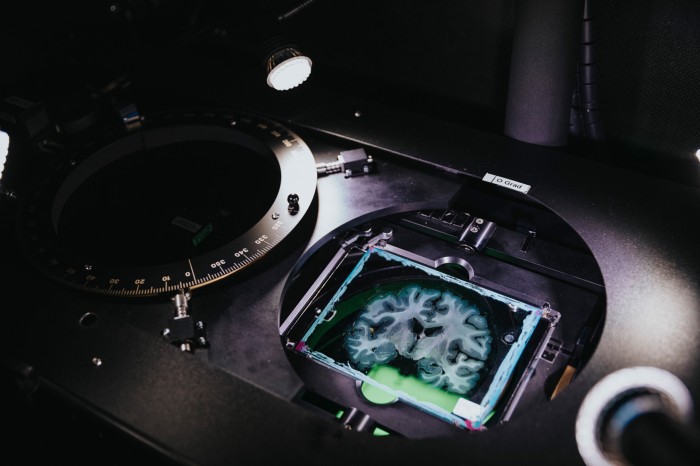
 Stereotactic radiosurgery (e.g., Cyberknife) directs a high dose of radiation targeted to the specific shape of the tumor, sparing surrounding healthy tissue from unnecessary radiation exposure. Whole-brain radiation targets the entire brain to hit multiple tumors or any metastatic disease that hides from an MRI scan. External beam radiation therapy delivers radiation from a machine and through the body to reach metastatic tumors. Procedures may include any one or a combination of the following: These painless treatments involve passing beams of radiation through the brain, which can treat cancers in areas that are difficult to reach through surgery. Radiation therapy treats metastatic brain tumors by using X-rays and other forms of radiation (light energy) to destroy cancer cells or prevent a tumor from growing. Radiation Therapy for Metastatic Brain Tumors Learn more about brain tumor surgery and recovery. The most common type of surgery to remove metastatic brain tumors is called a craniotomy, which can be performed through a variety of approaches, including the keyhole craniotomy. The primary cancer is treatable and under control. There is a clear link between the symptoms and the tumor’s location. In general, doctors recommend surgery for metastatic brain cancer when: The goal of surgery is to minimize the amount of space the tumor takes up by debulking, which means removing as much of the tumor as possible while maintaining neurological function. Some patients may find improvement of symptoms as early as within hours of surgery if mass effect is what is causing your symptoms.
Stereotactic radiosurgery (e.g., Cyberknife) directs a high dose of radiation targeted to the specific shape of the tumor, sparing surrounding healthy tissue from unnecessary radiation exposure. Whole-brain radiation targets the entire brain to hit multiple tumors or any metastatic disease that hides from an MRI scan. External beam radiation therapy delivers radiation from a machine and through the body to reach metastatic tumors. Procedures may include any one or a combination of the following: These painless treatments involve passing beams of radiation through the brain, which can treat cancers in areas that are difficult to reach through surgery. Radiation therapy treats metastatic brain tumors by using X-rays and other forms of radiation (light energy) to destroy cancer cells or prevent a tumor from growing. Radiation Therapy for Metastatic Brain Tumors Learn more about brain tumor surgery and recovery. The most common type of surgery to remove metastatic brain tumors is called a craniotomy, which can be performed through a variety of approaches, including the keyhole craniotomy. The primary cancer is treatable and under control. There is a clear link between the symptoms and the tumor’s location. In general, doctors recommend surgery for metastatic brain cancer when: The goal of surgery is to minimize the amount of space the tumor takes up by debulking, which means removing as much of the tumor as possible while maintaining neurological function. Some patients may find improvement of symptoms as early as within hours of surgery if mass effect is what is causing your symptoms. 
Surgery provides fast relief of “mass effect” - pressure inside the skull resulting from a growing metastatic tumor and swelling of the brain. In many cases, surgery or radiation therapy can improve - or entirely get rid of - symptoms. The treatment options for brain metastases may include: Generally, the faster you start treatment, the better the chances of killing or controlling the disease. It is important to know that metastatic brain tumors are often treatable, and can be well-controlled. Biopsy: Collecting a piece of the tumor through surgery may be necessary when the diagnosis is unclear based on the other tests.It reveals microscopic differences of tissue structure, including very early infiltration of cancer cells. Diffusion tensor imaging (DTI) is a type of MRI that visualizes how water molecules pass through parts of the brain.Physical exam: After gathering information about your symptoms and personal and family health history, the doctor proceeds with a physical exam and vision and reflex tests.

Here are some ways doctors may diagnose a metastatic brain tumor: Metastatic brain and spine tumors are not usually diagnosed until symptoms appear.

How are metastatic brain tumors diagnosed? The risk for metastatic brain tumors begins to increase after age 45, and is highest in those over 65. Who is at risk of developing metastatic brain cancer?Ībout one-third of patients with another type of cancer will develop one or more metastatic brain tumors. What are the symptoms of brain metastases?Ĭommon signs and symptoms of brain metastases include:








 0 kommentar(er)
0 kommentar(er)
